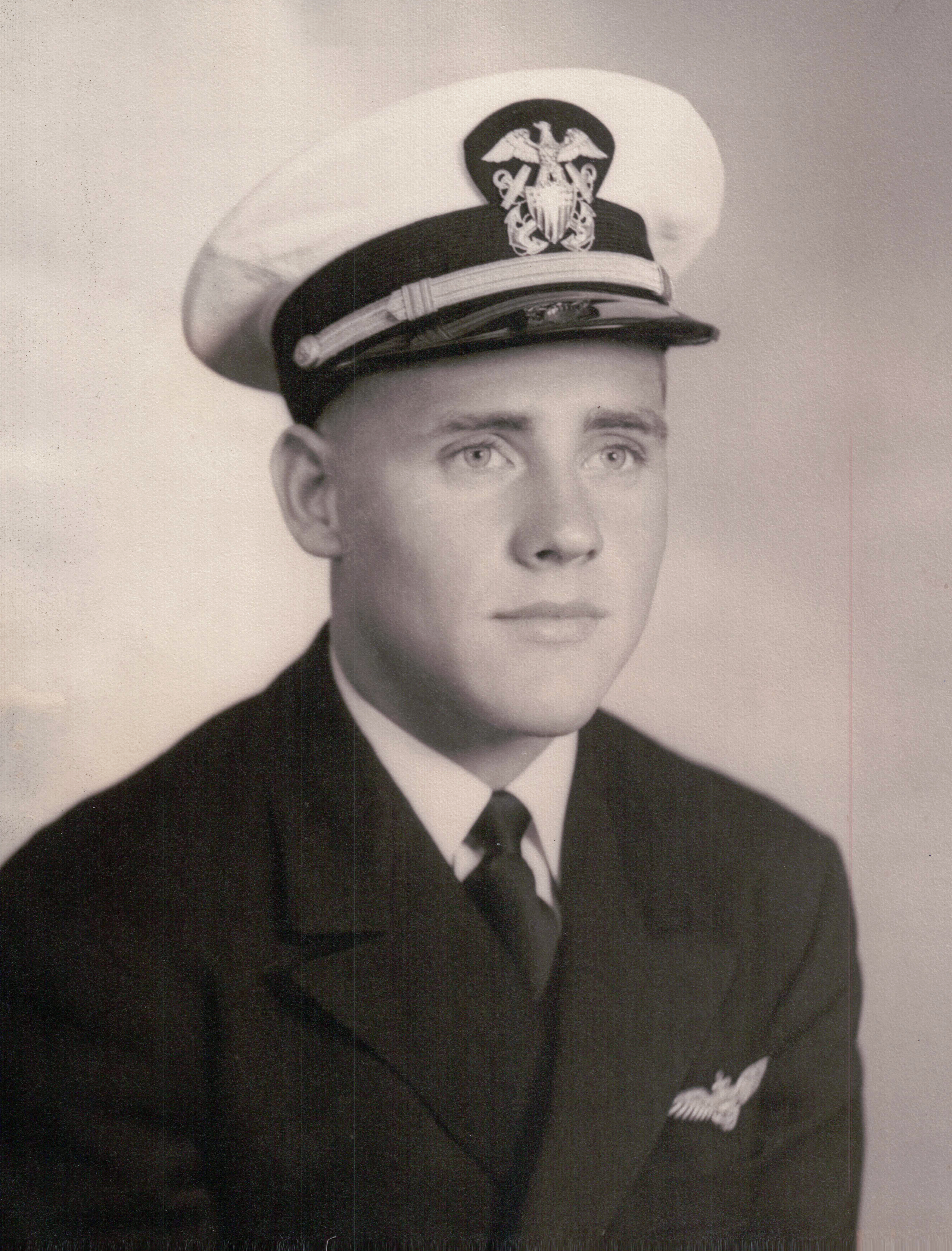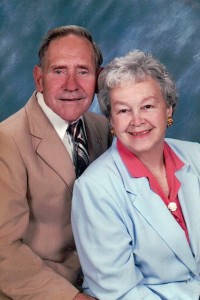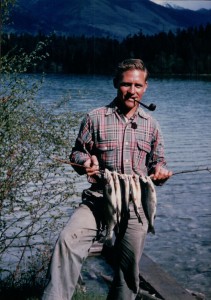
Raymond Emil Falkner, age 91, passed away on March 2, 2015, at his home of 48 years, in Bellevue, Washington. He was an only child, born on July 28, 1923, in Los Angeles, California, to Emil Frank and Mabel Frances Faulkner. He was raised by his mother, as his parents divorced when he was a young child. The original spelling of his last name was Faulkner with a “u”, but an error made on his birth certificate legally changed the spelling to Falkner. He went by Faulkner until his military service.
Ray was highly active and socially popular during his school years in California. In 1938, he was student body president at Van Nuys Junior High School. During his high school years, Ray served as student body president, was president of the boy’s league, and lettered in football and gymnastics (free exercise, rings and parallel bars). He also loved the sun, sand, surf and snow, and even made his own surfboard and snow skis in his high school shop class. His nicknames included “Dutchie” and “Ironman”. One friend referred to him as “Burr head”. Whether this was from his high and tight hair cut, or just being stubborn is up for discussion. Ray developed lifelong friendships that have lasted to this present day. During high school, a newspaper clipping described Ray “Dutchie” Faulkner as “a letterman, top man on the gym team, an outstanding scholar and generally a fine fellow”. Ephebian honors, the highest distinction accorded to a city school graduate, were conferred upon him at his graduation from Van Nuys high school, in January, 1942. Following his graduation from high school, Ray had jobs including working for companies in the aircraft and movie industries.
During WWII, with feelings of patriotism for his country, at the age of nineteen Ray enlisted in the U.S. Navy to be commissioned as a Flying Officer. In May 1942, he went to preflight school at the Naval Air Training Center in Corpus Christi, Texas, and graduated as an Ensign in July, 1943.
His first assignment was to an experimental torpedo testing facility in Newport, Rhode Island. He piloted mainly torpedo bombers, TBF’s & TBM’s, but in his off time had checked-out on corsairs and various other aircraft. He later requested fleet duty “to see action”, and was later assigned to the U.S.S. Ommaney Bay, attached to Douglas MacArthur’s 7th fleet. He supported many amphibious landings on various islands in the South Pacific and Philippines. Ray also carried out other missions including airstrikes against the Yamato, one of Japan’s heavy battle ships. During the attack his bomb didn’t release and he had to make a second approach to drop it against his tail gunner’s calls to abort. Ray later said that the tail gunner probably could see the flack from the exploding shells and tracer rounds more clearly from his vantage point. Ray was later put up for commendation which gained him the Distinguished Flying Cross for valor from the Navy.
His carrier was sunk on January 4, 1945 during a Japanese Kamikaze attack in which 125 out of a crew of 500 were killed. Squadron VC-75 lost most of the fighter pilots as they were on alert in the ready room. Fortunately, Ray was preoccupied elsewhere on the ship during the attack and in the aftermath remained helping many men that day. Survivors were picked up by supporting ships and continued on to support the landings on Luzon. The survivors were then returned to the United States, where they were assigned to a new squadron. The squadron was prepared to ship out when the Japanese surrendered. Ray’s military commendations and citations included the U.S. President’s Distinguished Flying Cross, and several awards for heroism and extraordinary achievement in aerial flight as a pilot of a TBM torpedo plane.
Following his honorable discharge from the U.S. Navy, he enrolled in the University of California, Los Angeles (UCLA) in September 1945. He attended and graduated from the University of Southern California (USC), School of Engineering and earned a Bachelor of Engineering (Civil Engineering) degree on June 12, 1954. Ray remained in the Naval Reserves until 1960. During his life long career as a Civil Engineer, he was employed by companies that included the Boeing Company, the Federal Aviation Administration (FAA) and the Arabian American Oil Company (ARAMCO). Ray also took overseas assignments that included jobs in French Morocco, Spain, Germany, Vietnam, Turkey and Saudi Arabia. His projects included surveying airfields and air bases, building a metro pipeline project, working on a refinery and installation of a fish hatchery in Neets Bay, Alaska. He was a hard worker and from having grown up during the Depression era, was keenly aware of the value of money.
 On June 18, 1955 Ray married Irma Louise at the Presbyterian Church in Santa Barbara, California. He was a loving husband of almost 60 years, and a devoted father. He instilled good values in his three children, Raymond Edward, Susan Jean and Mark Steven Falkner. A lifelong love was also for the nine boxers that he owned over the years. He had a good sense of humor and a deep love for family and friends. He always kept busy with projects and hobbies and enjoyed working in the yard and around the house keeping his family comfortable. Family activities included car camping, fishing,
On June 18, 1955 Ray married Irma Louise at the Presbyterian Church in Santa Barbara, California. He was a loving husband of almost 60 years, and a devoted father. He instilled good values in his three children, Raymond Edward, Susan Jean and Mark Steven Falkner. A lifelong love was also for the nine boxers that he owned over the years. He had a good sense of humor and a deep love for family and friends. He always kept busy with projects and hobbies and enjoyed working in the yard and around the house keeping his family comfortable. Family activities included car camping, fishing,  skiing, hiking and mountain climbing. He also enjoyed flying radio-controlled airplanes.
skiing, hiking and mountain climbing. He also enjoyed flying radio-controlled airplanes.
He will be dearly missed by those he leaves behind. Ray is survived by his loving wife, Irma, and their children, Raymond E. Falkner (Molly), Everett, WA, Susan J. (Stephen) Applegate, Keller, TX, and Mark S. Falkner, Bellevue, WA, grandchildren, Kathryn “Katie” (Carlos) Bustamante, Christine Applegate, and Daniel Applegate, and great grandchildren, Lauren and Alex Bustamante. He was preceded in death by his parents, infant daughter, Diana Louise Falkner, and granddaughter, Kimberly Kathryn Falkner. Ray will be buried with Military honors at Tahoma National cemetery, in Kent, Washington.
